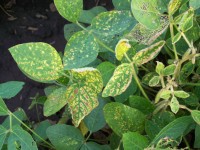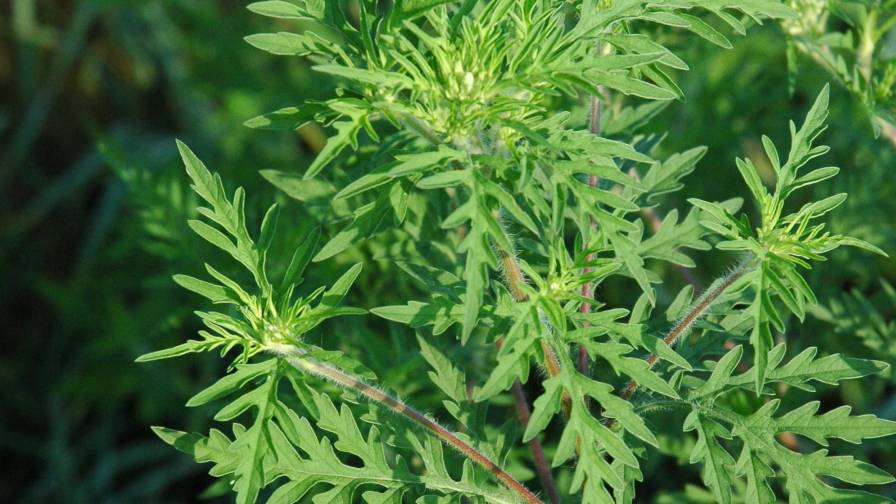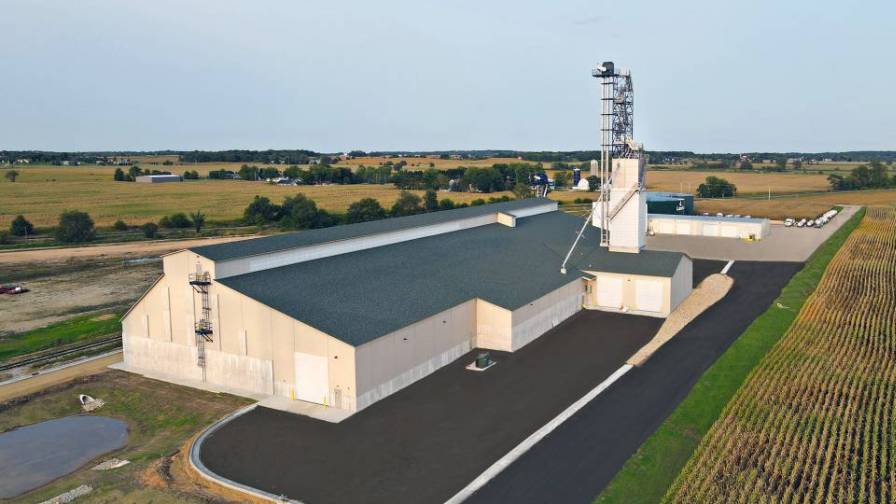Insect And Disease Report

Trying to predict this year’s insect and disease problems based on last season’s experiences can be a little dicey, as always. But experts are reading some signals that make them more optimistic about corn than soybeans.
Soybean Safety Questions
Indiana saw ideal planting conditions for soybeans in April, but cool, wet weather in May led to seedling blights and favored development of sudden death syndrome (SDS), says Kiersten Wise, plant pathologist with Purdue University. Some fields experienced serious yield losses. In fact, SDS was also widespread and severe in Iowa, IlliÂnois, Minnesota, Wisconsin and South Dakota according to Extension plant pathologists in those states. Foliar symptoms of the disease were especially abundant in fields planted in April in Illinois and Indiana.
Wise also warns that Midwest fields with high levels of white mold of soybean in 2009 — planted back to the crop in 2011 — may be in danger. “We are concerned about the potential for disease development if the weather around flowering is cool and wet,” she says.
Carl Bradley, plant pathologist and Extension specialist with the University of Illinois, noted that charcoal rot hit Illinois, particularly to the south where very dry conditions prevailed. And soybean cyst nematode continued to rob yield from growers who are ignoring or mismanaging the pest, he says.
Growers across Illinois saw frogeye leaf spot, though generally not at damaging levels. But Bradley reports that strobilurin fungicide-resistant strains of this fungus were actually confirmed in Southern Illinois, as well as in Western Kentucky and Western Tennessee. “So it’s important that growers with a history of damaging levels of frogeye leaf spot manage the disease through resistant varieties rather than spraying a strobilurin fungicide,” he recommends.
Aphids Have New Friends
As Mike Gray, professor with the University of Illinois, puts it: “Last year was very unimpressive for major insect pest infestations of corn and soybeans throughout many areas of the Midwest.” Soybean aphid densities were very low — and are anticipated to be low again this season, he says. In fact, Gray says it will take almost ideal environmental conditions (mild summer) to promote outbreaks, and even if they occur, it will be late in the season.
Greg LaBarge, Extension educator with The Ohio State University in Northwest Ohio, does note that based on the every-other-year guideline for soybean aphid infestations, 2011 is an “on” year.
Gray says there are a few other insects to watch for in 2011. Some new stink bug species, including marmorated, red-banded and red-shouldered stink bugs, appear to be making their way across the Corn Belt.
Ron Hammond, field crop Extension and research entomologist with The Ohio State University, reports that brown marmorated stink bug has now been seen throughout Ohio. He anticipates this pest will increase in numbers and be a possible problem on soybeans in 2011. Erin Hodgson, entomologist at Iowa State University, explains that this stink bug punctures plant tissues such as leaves and stems and sucks on plant juices with its beak, similar to aphids or leafhoppers.
Turning To Corn
In corn, high levels of gray leaf spot (GLS) hit some fields in Indiana, reports Purdue’s Wise. “If these fields stay in reduced-tillage and continuous corn rotations, there is the potential for GLS to be more severe if the weather conditions are favorable for disease development,” she cautions.
GLS also caused damage in IlliÂnois, as did Northern leaf blight, says Bradley. Unfortunately, some growers’ fields suffered major losses from Goss’s bacterial wilt. Hardest hit were fields that had suffered injury from earlier in the season, such as wind or hail damage. Goss’s wilt also caused damage to crops in parts of Iowa.
Ear rots, especially Diplodia ear rot, were seen in some areas that had sustained heavy rainfalls prior to and throughout silking, says Bradley, and stalk rots occurred in some areas, especially in fields that had severe leaf blights from gray leaf spot or Northern leaf blight.
Last season raised questions for Bradley about the effectiveness of corn hybrids with Northern corn leaf blight resistance. “In some cases where growers felt the resistant hybrids were not performing like they should, it’s possible a different race of the fungus was present,” he says.
Corn Feeders
Western bean cutworm (WBC) hit many Indiana fields in 2010, and “we would expect high numbers again this year, given the good overwintering conditions,” says Christian Krupke, entomologist at Purdue University. Risk factors include sandy soils, no-till fields and continous corn.
Krupke says scouting combined with pyrethroids applied at egg hatch achieve excellent control levels, as do Bt hybrids labeled specifically for WBC. The egg-laying period for this cutworm is from mid-June to mid-July, so that’s when scouting and/or treatment should occur, says Krupke. Once the WBC larvae enter the plant, they are not vulnerable to sprays.
Extension specialists are, in fact, tracking the eastward progress of this pest, says northwest Ohio State’s LaBarge. He’s seen some noneconomic feeding injury, but does not anticipate problems in his region in 2011. He’ll be paying closer attention to trap counts and corn growth stages.
There is some seriously good news on other corn insects: WestÂern corn rootworm densities were some of the lowest IlliÂnois’ Gray has seen in 20 years. Here again, it will take very favorable spring conditions (early planting, drier soil conditions in late May and early June) during hatch for them “to mount any kind of rebound.”
Krupke found the same kind of rootworm numbers in Indiana. “They were virtually absent in many fields where they were abundant just a few years ago,” he says. He credits a combination of Bt corn adoption and extremely wet springs that have drowned larvae.
Even more good news — increasing use of Bt corn has led to historically low populations of European corn borers.





